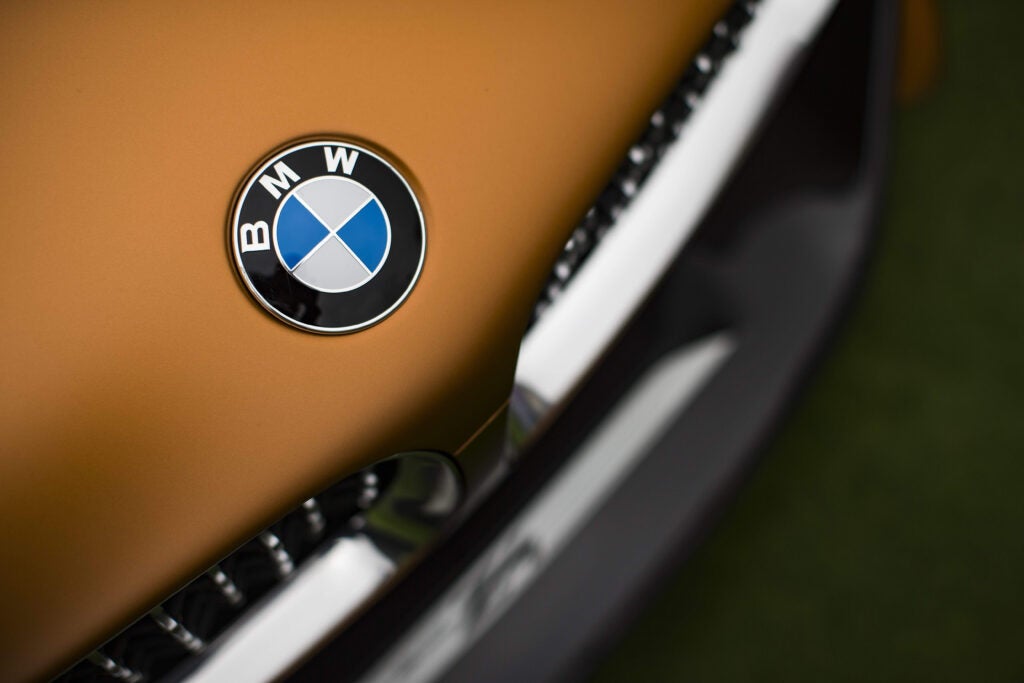
The rise of personal contract purchases (PCP) in the UK new car market is by now fairly well known, the gist of which involves captive finance houses and manufacturers using the product as a method of increasing sales and improving customer retention rates. The results have been impressive, as UK motor sales have now seen sustained growth for a number of years, while new car finance penetration in the UK market has hit record levels. The majority of this finance is PCP.
On the consumer side, the advantages of PCP are also well known – it keeps monthly payments down, allowing customer to look at better spec’d models or perhaps look at more prestigious brands. It also allows consumers who, just a few years ago, would traditionally have been used car buyers to begin contemplating new cars. This was helped by a number of subvented deals offering cheap rates and deposit contributions.
While used car sales have also increased since the recession, the fact was that captive finance providers were able to provide a finance product that could make the month to month price difference between a new and nearly new car almost negligible. This was compounded by relatively strong used car prices.
This is something James McGee, managing director of Northridge Finance says he found in the market: "New cars at the moment are heavily subvented, so new cars already have an advantage on used cars, and a lot of people who would have been traditional used car buyers, who are going into the marketplace planning on buying a one or two-year-old car, when they see these fantastic new car offers, decide to buy new. You can’t blame them for it."
Partly as a method of combating this threat, a number of used players now also offer their own PCP deals.
How well do you really know your competitors?
Access the most comprehensive Company Profiles on the market, powered by GlobalData. Save hours of research. Gain competitive edge.

Thank you!
Your download email will arrive shortly
Not ready to buy yet? Download a free sample
We are confident about the unique quality of our Company Profiles. However, we want you to make the most beneficial decision for your business, so we offer a free sample that you can download by submitting the below form
By GlobalDataMcGee says: "The ability to offer PCP on used cars, helps used cars to compete with new cars. If you didn’t have PCP on used cars at the minute you might find that possibly there would be even more new car sales relative to used."
At the moment approximately 20% of all finance that Northridge writes is PCP. Northridge’s PCP product is only two years old.
In comparison, approximately 36% of all used car finance for the 12 months to June 2015 was PCP, according to the Finance & Leasing Association (FLA).
According to Mark Gow sales director at DSG Finance, Northridge isn’t the only independent lender to have brought out a PCP product in the past couple of years. However the more significant growth he’s seen is in the parameters that lenders will offer PCP.
He says: "If I went back four years, we had four lenders who offered PCP. Back then, only one of them did 48-month periods for cars up to five years old. The other providers only offered, at most, three-year periods on cars that were two or three years old.
"This gave that one provider a really strong USP – they were the only ones providing PCP over this period or for these cars. Or both. Now, though, all four of these prime lenders are doing four-year PCP on cars up to four or five years old."
PCP in the used car market has grown at a rapid rate over the past few years. According to FLA figures, for the 12 months to June, a total of £4.1bn worth of used car PCP business was done. This was up from £3bn for the 12 months to June 2014 – a growth rate of 35%.
This was substantially faster than the growth rate of total used car finance, which grew by just under £1.4bn to £11.45bn, or 14%, over the same period. In other words, over that period, PCP accounted for over two-thirds of all used car finance growth.
According to Gow, in 2011 just 50,000 used cars were sold on PCP finance. In 2014, he said, that number was 187,000.
DSG has also seen the rates it is able to offer its dealers and their customers fall over the past year or two. Gow says: "The difference between a new car PCP to a used car PCP, I would have said 12 months ago, was quite a significant gap in interest rates. You might have got 2.9% APR on a new car, but on a used car you’d get 9.9%. We’re currently doing 5.9% APRs on used PCP up to three years old.
"We’re not quite replicating what some manufacturers can do, but when you look at the campaigns out there you might find some 0% or 2.9% new car PCP deals, but there are also some 7.9% and 8.9% ones. So now we can compete. I wouldn’t have said this was the case 12 months ago."
In some cases, this now means that customers might choose a used car of a more ‘prestigious’ brand than a new car. Gow says: "If you look hard enough, you could find a brand new, souped-up Astra for £20,000. Or you could find a five year old Mercedes – a real, prestigious car. A £20,000 loan over five year is £400 a month, but on PCP you can have it for under £300."
Beyond just competing with new cars, PCP offers used car dealers, lenders and brokers a number of advantages.
McGee says PCP lends itself perfectly to younger, higher-value used cars. He says: "You can defer a lump of the capital to the end of the contract, and keep your repayments down. And when you’ve got CAP Gold and Glass’s predicting future values on a very accurate basis, and they can do that for new and used cars, it makes perfect sense to utilise the PCP product within the used car marketplace.
Gow says that dealer groups have also become effective at using it for increasing customer retention, particularly when you have certain dealer groups that are effectively branding their own PCP. They often won’t call it PCP – so, for example, Motorpoint call it ‘Boomerang’.
The growth can also be attributed to a change in consumer habits, with an increasing number of customers looking to trade their cars more regularly, McGee says, adding: "As you have more and more of the customer base knowing they’re only going to keep their cars for two or three years, with the plan definitely to change their model at the end, it makes sense to keep the monthly repayments down to a manageable level during the loan period.
Fundamentally then, the core consumer reason for choosing a PCP product when looking for a used car will remain the same as when looking for a new car – it will provide them with a means of buying a superior, or at least more expensive, model than they would be able to afford via a cash or hire purchase method.
Gow explains: "We’ve found the PCP on used cars for customers tends to fund an aspirational purchase. So if you can afford £200 a month, what would you rather have – a two-year-old car or a five-month-old car? We’ve found a lot of buyers use it to go prestige. So rather than having a volume car for £200 on HP, they can have a better car for the same per month cost on PCP.
McGee mirrors these thoughts: "If you were buying a one-year-old Audi or Mercedes, that car would still be reasonably expensive. It will have a fairly high monthly payment if you want to pay it all back in four or five years. If you’re a customer who would traditionally change your car every three or four years, why not use that equity in your metal, fix a future value in your car, and pay a much lower monthly payment? It just makes sense."
While both McGee and Gow believe PCP will continue to grow for newer used cars, as the age and value of a car drops off, both say the benefits of PCP become less.
McGee, for example, says: "If somebody is looking to pick up a four- year-old volume car which is retailing at six or seven thousand pounds, and the customer has put a £2,000 deposit in, PCP doesn’t seem as attractive as to the customer who’s looking to borrow £20,000 with a £2,000 deposit."
Subprime
According to Gow, there are virtually no lenders out there who offer PCP vehicle on ‘nine or ten’ year-old vehicles, and he also notes a distinct lack of subprime PCP options as well.
According to Shamus Hodgson, director of sales and operations at Moneybarn, there are a variety of reasons why PCP has not had a huge impact on the subprime sector so far: "Some of the things that make PCPs such an attractive product to prime, and in particular captive, finance companies, do not necessarily hold the same value to subprime lenders," Hodgson says. "For instance, the customer retention benefit of a PCP product is diluted in a sector of the market where many customers will, when they get to the end of their subprime finance agreement, often be looking for a prime finance deal on the assumption that they have repaired their credit to some extent over the duration of the agreement.
"Additionally, and perhaps more importantly, a product that increases the level of balance sheet risk to the lender is inherently more risky for lenders who have higher rates of default. I suspect this is the main reason why no subprime lender has launched a PCP product yet."
Unconvincing
According to Hodgson, Moneybarn monitors the possibility of bringing out new products, including a PCP product. However so far it has found the argument for such a product in its field unconvincing. While he acknowledges the potential for cheaper payments may make it attractive to consumers, he says other elements, such as the ability to hand the car back at the end of the agreement, would not have the same effect on the product’s popularity in subprime as it does in prime.
Hodgson is careful not to rule out the possibility of a PCP product in the future, noting the possibility that PCP might begin to bleed down the credit scale in the future. He adds: "Given its popularity in the new and prime markets, it’s inevitable that it will be tried at some stage, but I think that the very different dynamics of the subprime market will make subprime lenders think long and hard before introducing the product."
This comes down to the fact that, while PCP is an excellent product for the right customers, allowing them to use a car affordably that would otherwise be unattainable, it isn’t suitable in every circumstance.
Whether or not the subprime market ends up being suitable for PCP is yet to be conclusively proven one way or the other, and it probably won’t be until a lender attempts it. However there are other risks involved in the product that used car providers need to bear in mind.
McGee notes that lenders need to make sure they structure deals according to consumer habits, or, in other words, make sure a customer has the correct amount of mileage and term value, instead of always competing on the lowest denominator, such as having the highest residual value and lowest monthly payment.
And while McGee trusts the work of CAP, he’s also aware that the increasing supply of cars entering the market over the next few years means lenders need to be prudent when predicting future values, so as not to let the product become a loss-maker down the line.
While lenders will need to watch out for this in the future, both Gow and McGee are optimistic about the use of PCP in the future, and both predict it will continue to grow.
Gow, for example says: "I can only see it increasing. Last year, according to the FLA, PCP made up about 35% of the used market. I’m not sure it’ll match the rate of growth from last year, but it will continue to grow as more and more customers switch over to it, and continue to use it."







